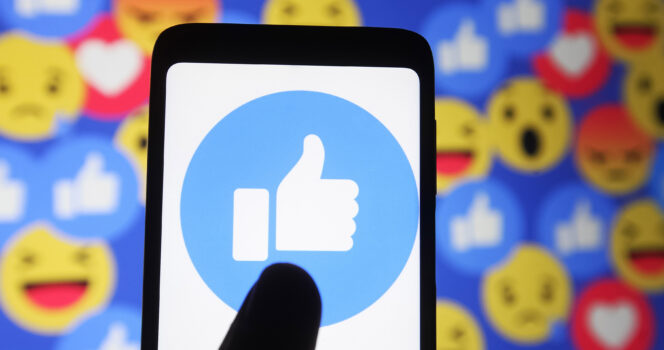
Communication evolves constantly—especially in the digital world. Emojis, once introduced as a fun extension of text messaging, now play a crucial role in how we convey tone and emotion online. But for Generation Z (born between 1997 and 2012, as defined by Pew Research Center), some emojis, particularly the widely used 👍 thumbs-up emoji, have taken on meanings that older generations may not expect. What once signified approval or agreement may now be perceived as cold, passive-aggressive, or even dismissive.
This shift isn’t random—it reflects deeper generational differences in digital communication preferences, workplace culture, and emotional expression.
The Workplace Culture Clash
The growing number of Gen Z workers entering professional spaces has brought new perspectives into corporate communication channels like Microsoft Teams, Slack, and Zoom. For many of these young employees, digital tone and clarity are more important than ever. According to a report by BBC Worklife (2022), Gen Z places high value on authenticity and emotional nuance in communication—especially in virtual environments.
This is where friction often arises. In many workplace messaging systems, emoji reactions offer a quick way to acknowledge a message. The thumbs-up emoji is commonly used to signal agreement or that a task is understood. But to some Gen Z users, this emoji—especially when used in isolation—can feel cold or dismissive.
A young employee on Reddit described this dynamic, stating that while most coworkers routinely use the thumbs-up emoji to acknowledge messages, they themselves prefer responding with heart emojis or written responses like “Great!” or “Thanks!”—actions they feel add a more human, warm touch to the conversation.

The Gen Z Perspective: A Need for Emotional Clarity
Many Gen Z individuals report discomfort with using or receiving the thumbs-up emoji. Some perceive it as impersonal or overly blunt. As shared by one Reddit user (24 years old), “For younger people, the thumbs-up emoji is used to be really passive-aggressive.” Their sentiment was echoed by another user, who added that it “feels unsettling because it’s impersonal,” suggesting that the emoji might lack the emotional nuance expected by the younger generation.
This perception may be rooted in Gen Z’s upbringing in the age of social media. Platforms like Instagram, TikTok, and Snapchat have conditioned them to favor personalized and visually rich interactions. Emojis, GIFs, voice notes, and emojis with specific context (like 🙌 or 😊) are often preferred because they feel more emotionally expressive.
According to a 2022 study by Adobe titled The Future of Creativity: Emoji Trend Report, 88% of global emoji users are more likely to feel empathetic toward someone when they use emojis in digital communications. However, the interpretation of emojis varies significantly across age groups. Younger users are more likely to attach nuanced emotional weight to specific symbols—including whether an emoji feels too “formal” or “aggressive.”
A Matter of Context and Culture
While some Gen Z individuals find the thumbs-up emoji emotionally distant, others still use it—but with intention. It’s not that the emoji is inherently offensive; rather, it’s the context in which it’s used that matters. A single 👍 sent after a heartfelt or important message, without additional words or emojis, might come off as dismissive or sarcastic, especially if the sender is in a position of authority or unfamiliar with the recipient.
On the other hand, Baby Boomers and Gen X (born between 1946–1980), who tend to see emojis as simple tools rather than emotionally charged signals, often use the thumbs-up as a straightforward, positive acknowledgment. This disconnect in digital etiquette can lead to misunderstandings between generations.
Digital communications consultant Judi Casey, in a feature with Forbes (2023), emphasized that younger employees are more attuned to “emotional intelligence in text,” whereas older generations may prioritize efficiency and clarity over emotional tone.

How to Bridge the Emoji Divide
To foster smoother communication across generations, especially in professional environments, it’s important to understand the intent behind emoji use:
- Use Clear Language: When in doubt, a short written response such as “Got it!” or “Sounds good, thank you!” can be more universally understood and appreciated than an emoji alone.
- Add Context: If using emojis, pairing them with text can help soften or clarify the tone. For example, 👍 paired with “Thanks for the update!” feels warmer than a standalone emoji.
- Know Your Audience: Consider your recipient’s age and communication preferences. If they’re part of Gen Z, it may be safer to use more expressive or friendly responses, especially in one-on-one messages.
Not Just About Emojis: Generational Communication Styles
This emoji debate is part of a broader conversation about how generations communicate differently. According to a Pew Research Center survey (2023), Gen Z is more likely than previous generations to prefer instant messaging over emails or phone calls and values tone and intent over brevity.
Older generations, accustomed to more hierarchical and formal communication structures, might see emojis as superfluous or casual, while Gen Z sees them as vital tools for expressing tone and emotion in text.
This shift is not about one group being “right” or “wrong,” but rather about understanding and adapting to evolving communication norms. As digital communication becomes increasingly central in both social and professional spaces, flexibility and empathy will go a long way in bridging these gaps.

Conclusion: The Emoji Isn’t the Enemy
The thumbs-up emoji isn’t disappearing anytime soon. It still serves a purpose for many—especially for quick, affirmative responses. But understanding how it’s perceived by others, particularly younger generations, is essential in today’s multi-generational workplaces and online communities.
Rather than abandoning the emoji altogether, the best path forward is mindful communication. Use emojis thoughtfully. Recognize that for some, symbols can carry unspoken emotional tones. And when in doubt, a few kind words will always go a long way.
Sources:
- Pew Research Center (2023). “Defining Generations: Where Millennials End and Gen Z Begins.”
https://www.pewresearch.org - Adobe (2022). “The Future of Creativity: Emoji Trend Report.”
https://www.adobe.com/emoji-trend-report - BBC Worklife. (2022). “The Great Emoji Divide: Why Gen Z Uses Emojis Differently.”
https://www.bbc.com/worklife - Forbes. (2023). “How Gen Z Is Changing Workplace Communication.”
https://www.forbes.com



